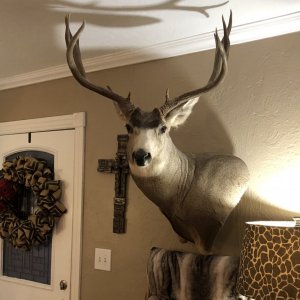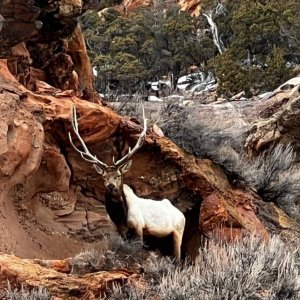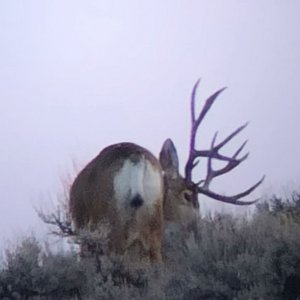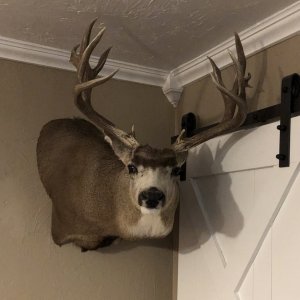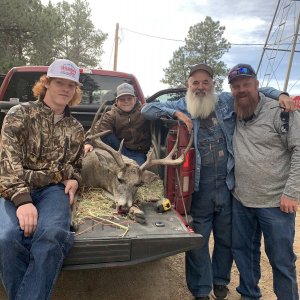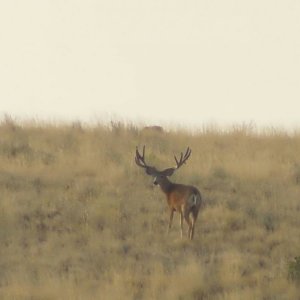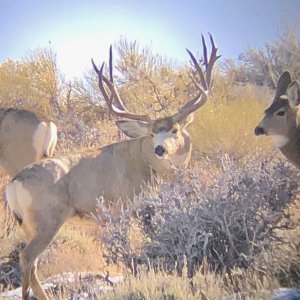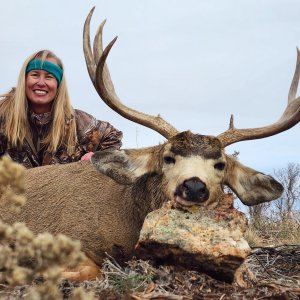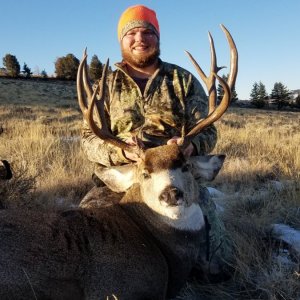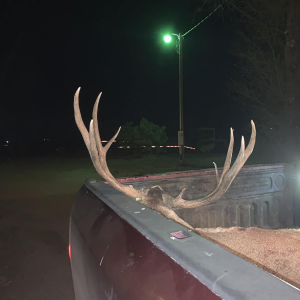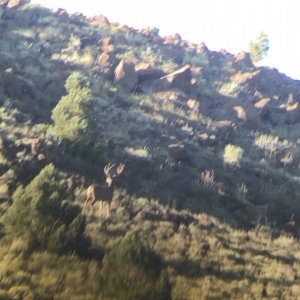The Sly Coyote Becomes a Bounty Hunters? Target in Utah
Coyote Hunting in Utah: A $50 bounty to control the coyote population in Utah has hunters excited, environmentalists crying foul and state wildlife administrators stuck somewhere in the middle.
By MELENA RYZIK
Published: March 22, 2013
OGDEN, Utah ? Spencer Glauser, who started hunting as a boy perched on his father?s shoulders, is an unabashed coyote hater. ?One?s too many? to have roaming the mountains and encroaching on towns, he said.
Mr. Glauser is not alone in his aversion or in his desire to do something about it. Last year, the Utah Legislature enacted a ?Predator Control? incentive program as a way to jointly curb coyotes and safeguard their occasional prey, the mule deer. Under the law, the state now pays civilians to hunt coyotes.
So this winter, when Mr. Glauser, 18, spotted a coyote on a patch of ice, he ably called it to him, and shot it. Then he made his way with the carcass to a Division of Wildlife Resources office here, where a government pickup truck served as a repository for parts. Ears, jaws, scalps and nose-to-tail pelts were deposited in an iced-over flatbed as hunters pulled up with garbage bags carrying the animals? remains. In orderly fashion, their hauls were documented.
One veteran trapper came with a cargo of a dozen skins. Others, like Mr. Glauser, proudly carried one capture. They lined up to qualify for their bounty: $50 per coyote.
Coyotes are considered a persistent menace in the West, where they and a highly adaptable neighbor, humans, have been encroaching on each other?s territory for decades.
?I've seen them pull down animals, and they're vicious,? said Chase Hufstetler, 29, who has been hunting coyotes for 15 years. ?I think they are a nuisance.?
He arrived at the collection point here, one of dozens around the state, with numbered brown paper bags containing the remains of eight coyotes.
The new bounty program represents one of the nation?s largest hunter-based efforts to manage predatory wildlife. Though no one knows how many coyotes there are in Utah, the law allows for as many as 10,000 animals to be killed. (The state is also home to the country?s only coyote research facility financed by the government.) By early March, six months into the collection, the remains of 5,988 coyotes had been turned in.
Utah residents pride themselves on the state?s natural beauty, its wildlife and the acumen of its hunters, and so the bounty program also represents an experiment in managing the competing agendas of conservation and culture, scientific and economic development. So far, hunters are enthusiastic, environmentalists are crying foul, and state wildlife administrators are stuck in the middle.
?I want to have these predators on the landscape,? said John Shivik, the mammal program coordinator for the state?s Division of Wildlife Resources. ?We?re not trying to kill them all off, but we've got to figure out ways to manage the damage they do, to keep them tolerated.
?Is it going to work? We don't know,? he added. ?But what we're doing is, we're giving it the best shot. Nobody?s tried anything this big before.?
Officially, the aim of the program is to protect the mule deer, a symbol of Utah. Larger than white-tailed deer, with distinctive oversize ears and impressive antlers, the mule deer is a favorite of hunters and hikers here. Coyotes prey on the fawns, so the Mule Deer Protection Act allots $500,000 for bounties. Gov. Gary R. Herbert, a Republican, signed the bill last March at a shop that manufactures hunting bows, as a way to emphasize the $2.3 billion that hunting and wildlife appreciation bring to the state economy.
But environmentalists argue that there is little scientific evidence that curbing the number of coyotes actually helps mule deer rebound. (A six-year study published in 2011 found that coyote removal did not effectively increase the mule deer population in neighboring southeastern Idaho.)
?The argument that coyotes have much impact on mule deer populations is speculative,? said Mark Clemens, the manager of the Utah chapter of the Sierra Club. His organization, along with the state Humane Society and the Western Wildlife Conservancy, opposed the bill. ?It was a terrible bill, we're really distressed by it,? Mr. Clemens said. ?It's mainly about protecting livestock owners.?
Carl Arky, a spokesman for the Humane Society, went further, suggesting that the program was an economic boondoggle with an intentionally misleading name.
?It's just a way to sell it,? he said. ?And honestly, who's going to care? The coyote is not an animal that a lot of people have a lot of sympathy for.?
Ranchers are keen to swap stories of coyotes taking out an entire herd of young sheep or cattle, and some have complained to legislators about coyote attacks. But the animals are unpredictable creatures, and not all prey on livestock, said Julie K. Young, a supervisory research biologist for the federal Department of Agriculture.
Count Dr. Young, who has spent her career studying coyotes, as a defender. She runs the coyote research facility in Logan, Utah, where 100 adult coyotes are studied in every aspect from behavior and reproduction to whether they are right- or left-footed. (It is relevant for trapping, and they are about half and half.) Along with scientists from Brigham Young University, Dr. Young, who is also a professor at Utah State University, is involved in a four-year study, independent of the bounty program, on how curbing coyotes affects mule deer. The study is largely financed by the Division of Wildlife Resources, which is also separately collecting data from hunters.
Though coyote populations are notoriously hard to track, estimates put the number of mule deer at about 300,000, a decline from a generation ago, said Anis Aoude, the big-game program coordinator for the Division of Wildlife Resources. Aside from factors like weather, the biggest threat to mule deer is not predation, he said, but changing habitats.
Still, hunters relish the opportunity to eliminate coyotes to give mule deer a better chance.
?We?re just doing what we can to help the deer population and be responsible stewards of the land,? said Blake Downey, 28, a hydrogeologist who came to the collection point in Ogden toting the jaws, ears and scalp of a coyote he bagged while bird hunting with his dog.
Mr. Hufstetler, who sold the pelts of his eight coyotes to a fur company, is keen to get them off the land ? except, he said, ?I love to hunt them.?
And Mr. Glauser, who is involved with Sportsmen for Fish and Wildlife, a nonprofit lobbying group, saw the coyotes? natural predation on fawns as a threat to a Utah way of life. ?At some point, I want my kids to be able to hunt deer, and be able to kill big deer,? he said.
The incongruity of killing one animal to spare another, only to kill the second animal for sport (or food), is not recognized here. More confounding are studies that suggest that coyotes are so hardy, and so reproductively able, that they will rebound even from large-scale slaughter. Killing coyotes may not result in fewer coyotes. As Dr. Young put it, ?The only truth about coyotes: they'll make a liar of you every time.?
By and large, though, the public does not seem to want more coyotes. ?The public wants more deer,? Dr. Shivik said. Nature may not cooperate, but authorities parsing legislation must.
Wildlife management, Dr. Shivik said, ?is as much about managing people.
?And sometimes,? he added, choosing his words with care, ?what people want isn't easy to do, biologically.?
Coyote Hunting in Utah: A $50 bounty to control the coyote population in Utah has hunters excited, environmentalists crying foul and state wildlife administrators stuck somewhere in the middle.
By MELENA RYZIK
Published: March 22, 2013
OGDEN, Utah ? Spencer Glauser, who started hunting as a boy perched on his father?s shoulders, is an unabashed coyote hater. ?One?s too many? to have roaming the mountains and encroaching on towns, he said.
Mr. Glauser is not alone in his aversion or in his desire to do something about it. Last year, the Utah Legislature enacted a ?Predator Control? incentive program as a way to jointly curb coyotes and safeguard their occasional prey, the mule deer. Under the law, the state now pays civilians to hunt coyotes.
So this winter, when Mr. Glauser, 18, spotted a coyote on a patch of ice, he ably called it to him, and shot it. Then he made his way with the carcass to a Division of Wildlife Resources office here, where a government pickup truck served as a repository for parts. Ears, jaws, scalps and nose-to-tail pelts were deposited in an iced-over flatbed as hunters pulled up with garbage bags carrying the animals? remains. In orderly fashion, their hauls were documented.
One veteran trapper came with a cargo of a dozen skins. Others, like Mr. Glauser, proudly carried one capture. They lined up to qualify for their bounty: $50 per coyote.
Coyotes are considered a persistent menace in the West, where they and a highly adaptable neighbor, humans, have been encroaching on each other?s territory for decades.
?I've seen them pull down animals, and they're vicious,? said Chase Hufstetler, 29, who has been hunting coyotes for 15 years. ?I think they are a nuisance.?
He arrived at the collection point here, one of dozens around the state, with numbered brown paper bags containing the remains of eight coyotes.
The new bounty program represents one of the nation?s largest hunter-based efforts to manage predatory wildlife. Though no one knows how many coyotes there are in Utah, the law allows for as many as 10,000 animals to be killed. (The state is also home to the country?s only coyote research facility financed by the government.) By early March, six months into the collection, the remains of 5,988 coyotes had been turned in.
Utah residents pride themselves on the state?s natural beauty, its wildlife and the acumen of its hunters, and so the bounty program also represents an experiment in managing the competing agendas of conservation and culture, scientific and economic development. So far, hunters are enthusiastic, environmentalists are crying foul, and state wildlife administrators are stuck in the middle.
?I want to have these predators on the landscape,? said John Shivik, the mammal program coordinator for the state?s Division of Wildlife Resources. ?We?re not trying to kill them all off, but we've got to figure out ways to manage the damage they do, to keep them tolerated.
?Is it going to work? We don't know,? he added. ?But what we're doing is, we're giving it the best shot. Nobody?s tried anything this big before.?
Officially, the aim of the program is to protect the mule deer, a symbol of Utah. Larger than white-tailed deer, with distinctive oversize ears and impressive antlers, the mule deer is a favorite of hunters and hikers here. Coyotes prey on the fawns, so the Mule Deer Protection Act allots $500,000 for bounties. Gov. Gary R. Herbert, a Republican, signed the bill last March at a shop that manufactures hunting bows, as a way to emphasize the $2.3 billion that hunting and wildlife appreciation bring to the state economy.
But environmentalists argue that there is little scientific evidence that curbing the number of coyotes actually helps mule deer rebound. (A six-year study published in 2011 found that coyote removal did not effectively increase the mule deer population in neighboring southeastern Idaho.)
?The argument that coyotes have much impact on mule deer populations is speculative,? said Mark Clemens, the manager of the Utah chapter of the Sierra Club. His organization, along with the state Humane Society and the Western Wildlife Conservancy, opposed the bill. ?It was a terrible bill, we're really distressed by it,? Mr. Clemens said. ?It's mainly about protecting livestock owners.?
Carl Arky, a spokesman for the Humane Society, went further, suggesting that the program was an economic boondoggle with an intentionally misleading name.
?It's just a way to sell it,? he said. ?And honestly, who's going to care? The coyote is not an animal that a lot of people have a lot of sympathy for.?
Ranchers are keen to swap stories of coyotes taking out an entire herd of young sheep or cattle, and some have complained to legislators about coyote attacks. But the animals are unpredictable creatures, and not all prey on livestock, said Julie K. Young, a supervisory research biologist for the federal Department of Agriculture.
Count Dr. Young, who has spent her career studying coyotes, as a defender. She runs the coyote research facility in Logan, Utah, where 100 adult coyotes are studied in every aspect from behavior and reproduction to whether they are right- or left-footed. (It is relevant for trapping, and they are about half and half.) Along with scientists from Brigham Young University, Dr. Young, who is also a professor at Utah State University, is involved in a four-year study, independent of the bounty program, on how curbing coyotes affects mule deer. The study is largely financed by the Division of Wildlife Resources, which is also separately collecting data from hunters.
Though coyote populations are notoriously hard to track, estimates put the number of mule deer at about 300,000, a decline from a generation ago, said Anis Aoude, the big-game program coordinator for the Division of Wildlife Resources. Aside from factors like weather, the biggest threat to mule deer is not predation, he said, but changing habitats.
Still, hunters relish the opportunity to eliminate coyotes to give mule deer a better chance.
?We?re just doing what we can to help the deer population and be responsible stewards of the land,? said Blake Downey, 28, a hydrogeologist who came to the collection point in Ogden toting the jaws, ears and scalp of a coyote he bagged while bird hunting with his dog.
Mr. Hufstetler, who sold the pelts of his eight coyotes to a fur company, is keen to get them off the land ? except, he said, ?I love to hunt them.?
And Mr. Glauser, who is involved with Sportsmen for Fish and Wildlife, a nonprofit lobbying group, saw the coyotes? natural predation on fawns as a threat to a Utah way of life. ?At some point, I want my kids to be able to hunt deer, and be able to kill big deer,? he said.
The incongruity of killing one animal to spare another, only to kill the second animal for sport (or food), is not recognized here. More confounding are studies that suggest that coyotes are so hardy, and so reproductively able, that they will rebound even from large-scale slaughter. Killing coyotes may not result in fewer coyotes. As Dr. Young put it, ?The only truth about coyotes: they'll make a liar of you every time.?
By and large, though, the public does not seem to want more coyotes. ?The public wants more deer,? Dr. Shivik said. Nature may not cooperate, but authorities parsing legislation must.
Wildlife management, Dr. Shivik said, ?is as much about managing people.
?And sometimes,? he added, choosing his words with care, ?what people want isn't easy to do, biologically.?

